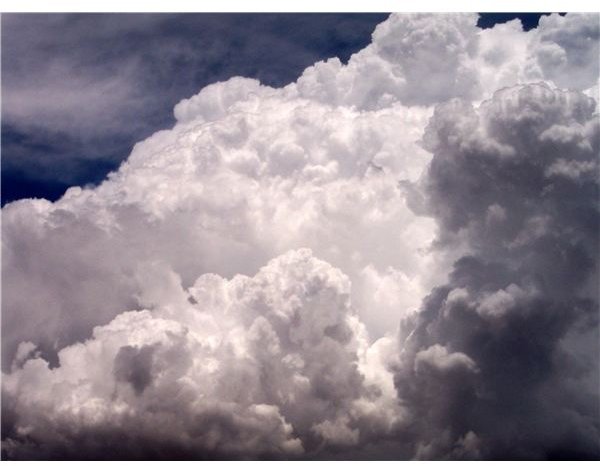Introducing Preschoolers to Science: All About Clouds
Prior Knowledge and Objectives
Before entering a lesson plan on clouds, children will realize clouds are in the sky and they often appear with rain. The children will know
some clouds cover the sun and others are out when the sun is shining. Children will have observed the fact that a cloud moves through the sky, though they may not fully understand why.
The objectives of this lesson are to teach children the differences between clouds, talk with children about how and why clouds move, and secure a basic understanding regarding how clouds begin to form.
Cloud Jars
Gather a glass jar, an ice cube and a paper plate. Talk about clouds and fog, and deduce together with the children that both substances are made from the same type of vapor.
While the class watches, pour the hot water into the jar. Fill the jar a quarter of the way from the top. Assign a volunteer to place the plate on top of the jar, then assign another volunteer to place an ice cube on top of the plate. A fog will form inside the jar, and water droplets will gather on the glass. This process may take a few minutes, so sing a short transitional song or read a short story while waiting for the formation. The children may be too young to fully understand the process of mixing hot air pressure with colder currents, but they will understand they made a cloud in their classroom. Other science experiments suggest using a lit match for this experiment, but most preschools frown on fire in the classroom. This experiment is a successful alternative to the matches.
Racing Clouds
This science activity involves a conversation with the children, then a demonstration by the children. Ask the group if they’ve ever seen a cloud move across the sky. When they answer yes, ask if they know how this could happen. When the class gets to the answer “wind,” ask them to put their hands in front of their mouths and blow. Ask them what they feel. They will say breath, but guide them to find a correlation between breath and air. Give each student a cotton ball, drawing visual similarities between the cotton and a cloud. Set up a finish line on a table, and tell the children to move their “clouds” across the table with the “wind.” Conduct competitive races.
Cloud Observation

Part of being a scientist is observing the subject. Depending on the class, talk with children about the visual quality of clouds. Clouds can look feathery and thin (cirrus), fluffy (cumulus), layered (stratus), or big and gray (cumulonimbus). Allow children to observe the clouds for a week, recording the type of cloud in the sky every day. The children can name the clouds by the adjectives describing their appearance, or they can use the real cloud names. After recording the type of cloud, record the weather for the same day. When the recording is finished, review the chart and discover what type of cloud accompanies what type of weather. Cumulonimbus clouds will accompany rain, while cirrus clouds often let plenty of sun and warmth through their layers.
Assessment
Assessment of children will happen during and after experiments. The children will be observed while the experiments and activities are taking place, and children will be allowed to ask questions. The questions asked by the children will allow the teacher to redirect understanding and demonstrate to the teacher which aspects of the experiment need to be reviewed. Teachers will assess students a day or two after the experiment to discover what type of information was obtained, and if the lesson was beneficial to the class. The teacher will repeat a misunderstood experiment or adjust experiments to the learning curve of the class to help students learn about clouds.
